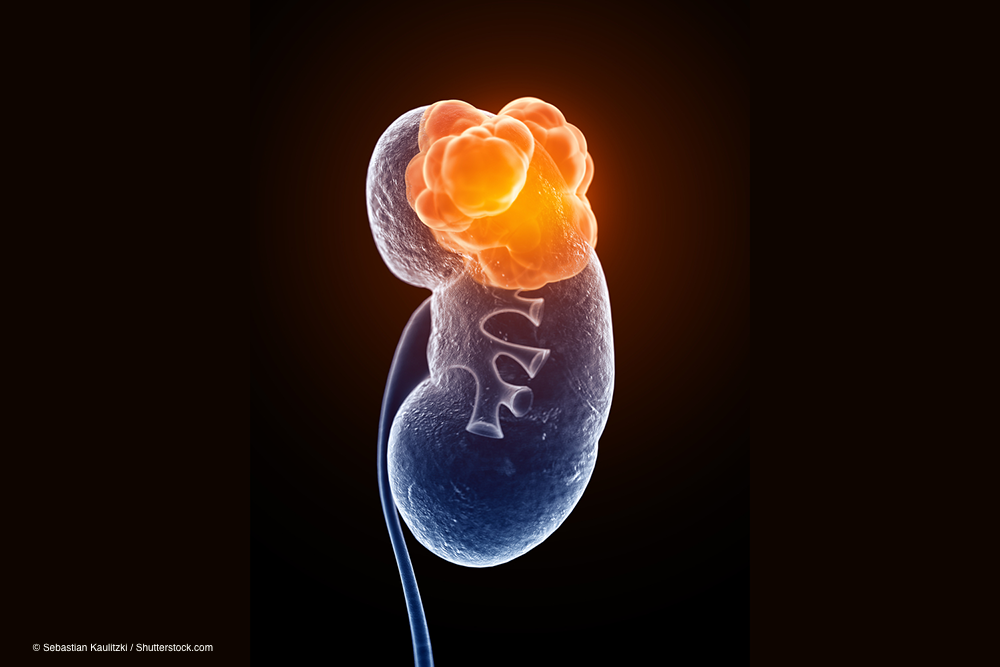Article
Percutaneous ablation vs. nephrectomy: Which is better?
Author(s):
A recent large, population-based comparative analysis examined outcomes for patients treated with percutaneous ablation, partial nephrectomy, or radical nephrectomy.
© Sebastian Kaulitzki / Shutterstock.com

Compared to radical nephrectomy, percutaneous ablation provides similar oncologic outcomes with fewer complications in older patients with small renal tumors, results of a large, population-based comparative analysis suggest.
The benefits of percutaneous ablation were less certain when compared to partial nephrectomy, though patients undergoing ablation appeared to have fewer complications, according to investigator Adam D. Talenfeld, MD, MS of Weill Cornell Medicine and NewYork-Presbyterian, New York.
This first-ever population-level study of percutaneous ablation outcomes strengthens findings of single-institution studies, and raises the level of evidence supporting its use in well-selected older patients, Dr. Talenfeld said in an interview with Urology Times.
Also see: Frailty index could identify indications for urologic Ca surgery
“The real question here is, for those older patients that can't get partial nephrectomy, are we doing the right thing by taking out their kidneys? And I think the answer is probably more often than not, no,” he said. “I think that we should consider percutaneous ablation ahead of radical nephrectomy for older patients when partial nephrectomy is considered less feasible.”
The observational cohort analysis by Dr. Talenfeld and colleagues, published in the Annals of Internal Medicine (June 26, 2018 [epub ahead of print]), was based on data from the SEER (Surveillance, Epidemiology, and End Results) cancer registry tied to Medicare claims data.
The investigators included data for a total of 4,310 individuals aged 66 years or older who underwent treatment for T1a renal cell carcinoma (RCC) between 2006 and 2011.
Next:5-year OS survival rates similar for ablation, radical nephrectomyThe 5-year overall survival rates for percutaneous ablation versus radical nephrectomy were similar, at 74% and 75%, respectively, results of the analysis show. Likewise, RCC-specific survival rates were 96% for percutaneous ablation and 95% for radical nephrectomy. Results were similar in a sensitivity analysis excluding patients with tumors not histologically confirmed as malignant, with 5-year RCC-specific survival of 94% versus 94% for percutaneous ablation and radical nephrectomy, respectively.
By contrast, 5-year overall survival was shorter for percutaneous ablation versus partial nephrectomy, at 77% and 86%, respectively. RCC-specific survival was 95% for percutaneous ablation and 98% for partial nephrectomy, a difference that became significant when including only histologically confirmed malignant tumors: 94% versus 98%.
The percutaneous ablation group had a 6% estimated rate of non-urologic complications at 30 days, versus 29% for partial nephrectomy and 30% for radical nephrectomy, according to the reported study data. Likewise, the PA group had a rate of acute renal failure less than 3%, versus 7% for partial nephrectomy and 11% for radical nephrectomy.
Read: Renal mass surveillance trends revealed
Renal insufficiency, cumulative from 31 to 365 days post-procedure, was 11% for percutaneous ablation and 9% for partial nephrectomy, in contrast to 18% after radical nephrectomy, though otherwise, cumulative complication rates over 365 days were comparable between groups, Dr. Talenfeld and colleagues reported.
Current AUA guidelines do say that thermal ablation should be considered as an “alternate approach” for patients with tumors up to 3 cm in diameter. However, they stop short of making a stronger endorsement due to a lack of comparative data, 5-year follow-up, and histologic proof of malignancy, according to Dr. Talenfeld.
“I think the AUA guidelines are pretty progressive, and certainly, other guidelines could now possibly be updated to reflect a higher level of evidence in favor of percutaneous ablation,” he said. “However, the individual treatment assignment is going to depend on the patient, surgeon, interventionalist, and tumor factors, so all those things need to be taken into consideration.”
To estimate the effect of treatment type on RCC-specific survival and overall survival in this study, the authors used propensity scores to create inverse probability of treatment-weighted samples balanced for multiple patient characteristics.
“Separately comparing percutaneous ablation with radical nephrectomy, and again versus partial nephrectomy, using inverse probability of treatment weighting allows us to look at patients that are more representative of the older T1a RCC population as a whole, rather than creating samples that are more skewed toward one treatment type or another, as can happen when creating propensity score-matched cohorts,” Dr. Talenfeld explained.















